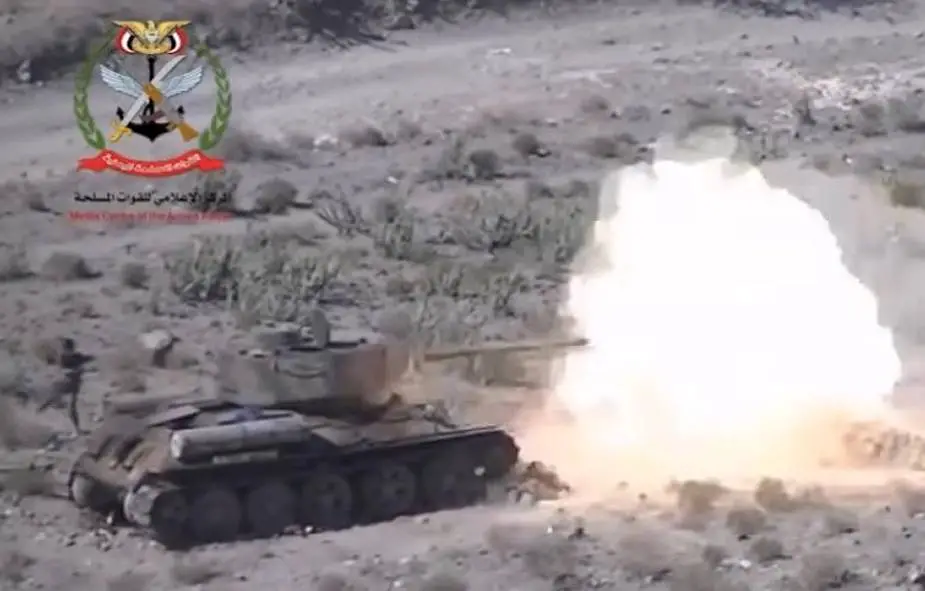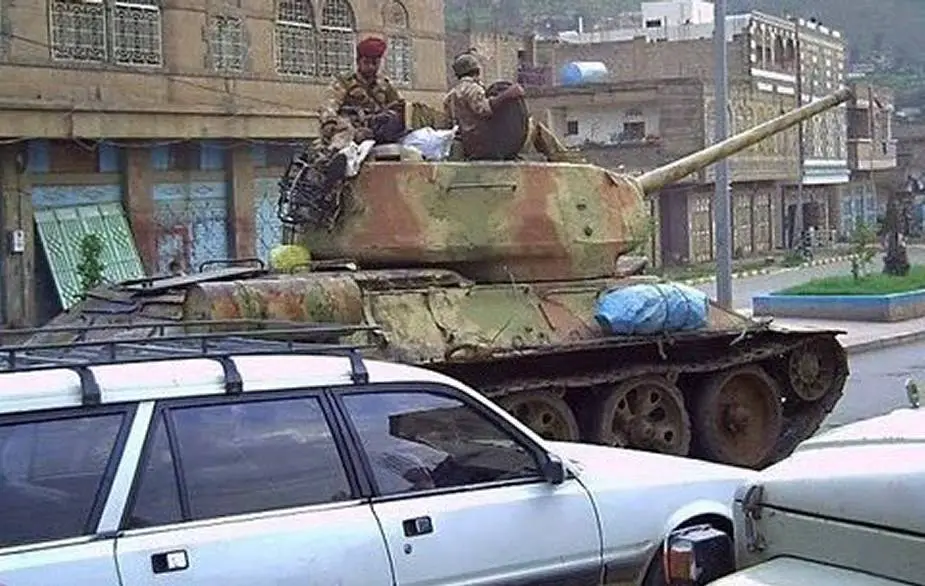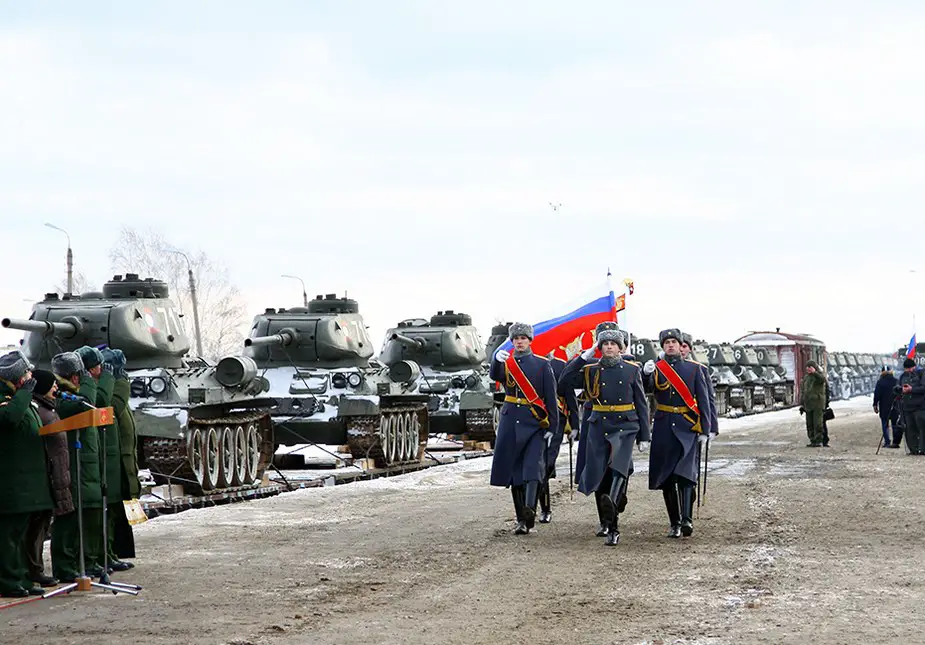According to two pictures tweeted by an unidentified social network user from Qatar, Soviet-made T-34/85 tanks dating back to World War 2 are still used to fight in Yemen.
Follow Army Recognition on Google News at this link

One of the Yemeni T-34/85 tanks in action (Picture source: screenshot tweeted by an unidentified social network user from Qatar)
According to International Institute for Strategic Studies (IISS), nine countries still have World War 2 Russian T-34 tanks in their inventories: Cuba, Yemen, Republic of the Congo, Guinea, Guinea-Bissau, Namibia, North Korea, Vietnam (believed to still have 45 in working order), and Laos (from where 30 units were sent back to Russia in January 2019 for historical parading purpose).

Yemeni T-34/85 tanks passing in an unidentified location (Picture source: screenshot tweeted by an unidentified social network user from Qatar)
The T-34 was introduced in 1940, famously deployed with the Red Army during World War 2 against Operation Barbarossa launched on 22 June 1941 by Nazi Germany against the USSR. Its 76.2 mm (3 in.) tank gun was more powerful than its contemporaries while its 60° sloped armor provided good protection against anti-tank weapons. The Christie suspension was inherited from the design of American J. Walter Christie's M1928 tank, versions of which were sold turret-less to the Red Army and documented as "farm tractors", after being rejected by the U.S. Army. After the Germans encountered the tank in 1941, German general von Kleist called it "the finest tank in the world" and Gen. Heinz Guderian affirmed the T-34's "vast superiority" over German tanks. "As early as July 1941, OKW chief Gen. Alfred Jodl noted in his war diary the surprise at this new and thus unknown Wunder-armament being unleashed against the German assault divisions." Although its armor and armament were surpassed later in the war, it has been described as the most influential tank design of the war.
The T-34/76 (76.2mm gun) was the mainstay of Soviet armored forces throughout the war. Its general specifications remained nearly unchanged until early 1944 when it received a firepower upgrade with the introduction of the greatly improved T-34/85 variant (85mm gun). The Soviets ultimately built over 80,000 T-34s of all variants. Replacing many light and medium tanks in Red Army service, it was the most-produced tank of the war, as well as the second most-produced tank of all time (after its successor, the T-54/T-55 series). With 44,900 lost during the war, it also suffered the most tank losses ever. Its development led directly to the T-44, then the T-54 and T-55 series of tanks, which in turn evolved into the later T-62, T-72, and T-90 that form the armored core of many modern armies. T-34 variants were widely exported after World War II, and as recently as 2018 more than 130 were still in service.

Laos transferred thirty T-34 main battle tanks to Russia. Their arrival in Naro-Fominsk, 80km (50 miles) from the capital, has been greeted by an impressive parade. (Picture source: Russian MoD)
Laos transferred thirty T-34 main battle tanks to Russia in January 2019. These tanks were placed at the disposal of the Kantemirov division. Tank crews started training for the Victory Parade 2019. These tanks and other splendidly restored WW2 vehicles started participating in historical TV and movie projects. "As instructed by the Russian Defence Minister, the Chief of the General Staff ordered to established the T-34 battalion. The battalion will station in Naro-Fominsk, in the 4th Guard Kantemirov division", stated Vladimir Zavadsky, the commander of the division. According to him, the battalion will be ready to perform its tasks from March 1.
These thirty T-34 tanks were in fact manufactured in Czechoslovakia during the 1950s. Until recently, they were on active duty in the Laotian military, almost 80 years after first being introduced into the Soviet military in 1940. "The equipment transferred by Laos is planned to be used during the Victory Parades in various cities of Russia, for updating museum exhibits, as well as for making historical films about the Great Patriotic War," the Russian Defense Ministry said.














